So I got these old wood hand planes from my dad. Most are various moulding planes and there is a 22” long smoothing plane. The irons are really rusty and might be able to be restored but I wouldn’t count on it. Only a couple have branding on them but I can’t read it based on the dirt/age of the branding. Couple of questions:
1. I don’t really see myself actually using these moulding planes, maybe the smoother. Is there a market for selling these as is or am I better off keeping them for man cave/shop decorations?
2. If I can’t fully restore them to a working order, am I better off leaving the dirt/age on them or cleaning them up to the point that you can see the brands?
Any other thoughts/comments? I am pretty out of my depth here on these since I am mostly a power tool guy.
1. I don’t really see myself actually using these moulding planes, maybe the smoother. Is there a market for selling these as is or am I better off keeping them for man cave/shop decorations?
2. If I can’t fully restore them to a working order, am I better off leaving the dirt/age on them or cleaning them up to the point that you can see the brands?
Any other thoughts/comments? I am pretty out of my depth here on these since I am mostly a power tool guy.
Attachments
-
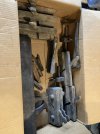 58DC87AC-4125-44CB-8C5B-5E78201392AB.jpeg1.7 MB · Views: 323
58DC87AC-4125-44CB-8C5B-5E78201392AB.jpeg1.7 MB · Views: 323 -
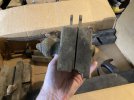 F5D329F2-85AF-4E43-A492-9231905A32B6.jpeg3.3 MB · Views: 283
F5D329F2-85AF-4E43-A492-9231905A32B6.jpeg3.3 MB · Views: 283 -
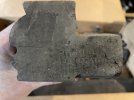 0E9DD1EA-A2E8-463D-8DE8-A75FB921083D.jpeg3.8 MB · Views: 314
0E9DD1EA-A2E8-463D-8DE8-A75FB921083D.jpeg3.8 MB · Views: 314 -
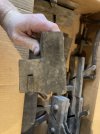 3E2B037F-29C6-4042-872F-EED0E5EC662E.jpeg1.7 MB · Views: 316
3E2B037F-29C6-4042-872F-EED0E5EC662E.jpeg1.7 MB · Views: 316 -
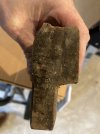 B41382B5-2306-4E61-A093-5B6AEF2F6E81.jpeg1.6 MB · Views: 308
B41382B5-2306-4E61-A093-5B6AEF2F6E81.jpeg1.6 MB · Views: 308
